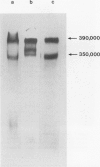Abstract
The Ca antigen, which can be detected in a wide range of malignant human tumours by means of the Cal antibody, is a glycoprotein of the mucin type. At least 95% of the carbohydrate is 0-glycosidically linked to the polypeptide which contains high proportions of glycine, serine and glutamic acid. The carbohydrate has a very simple structure: it is composed almost entirely of tetra- tri- and disaccharides having the general formula (NeuNac)n leads to [Gal leads to GalNac] alpha leads to, where n = 0, 1 or 2. In many malignant cell lines, the antigen is produced constitutively in vitro; but in one that has been examined, its synthesis can be induced by high concentrations of lactate. Evidence is presented for the view that a primary function of this glycoprotein is to shield the cells that produce it from hydrogen ion concentrations outside of the physiological range. The presence of the Ca antigen in malignant tumours may thus be a reflection of metabolic conditions that are known to be characteristics of such tumours.
Full text
PDF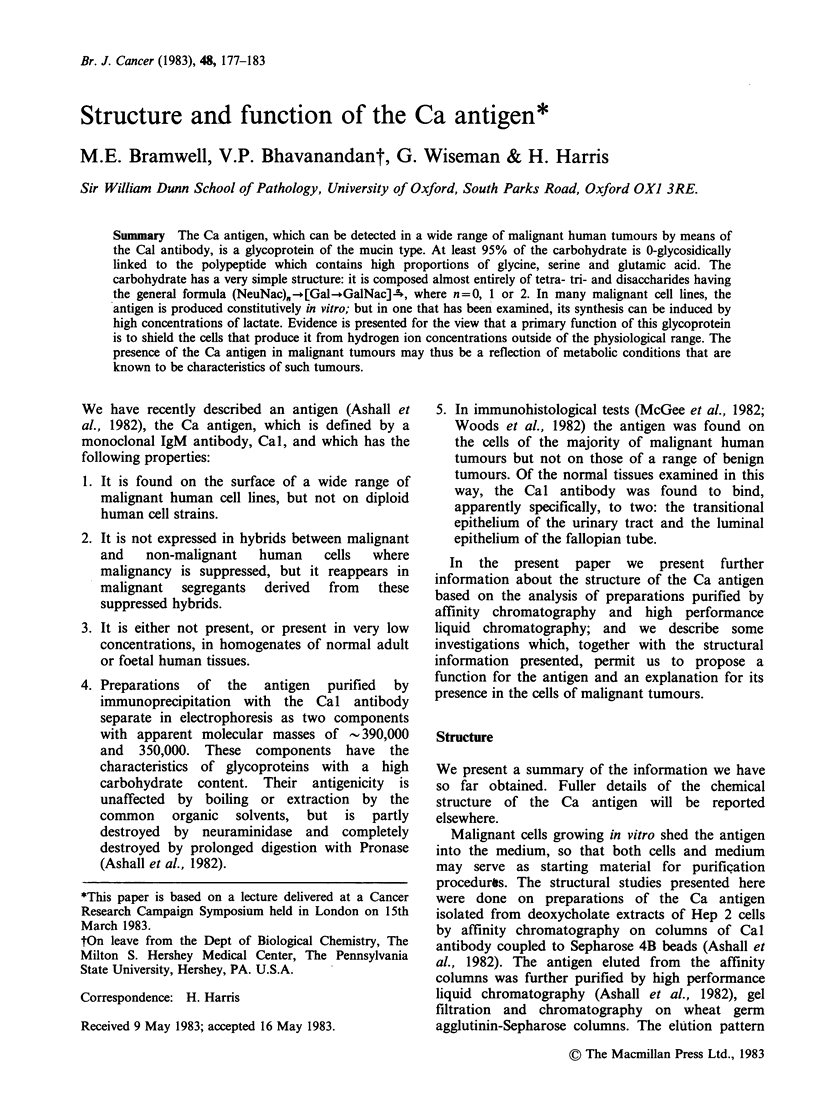
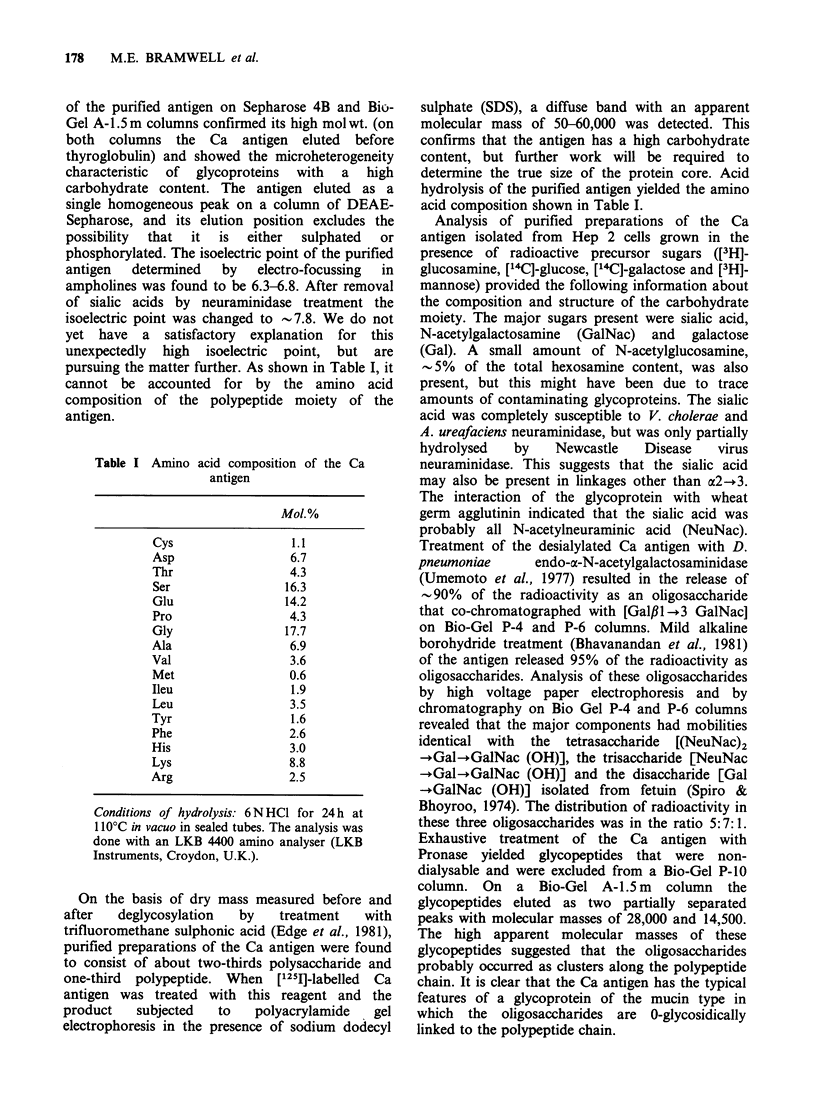
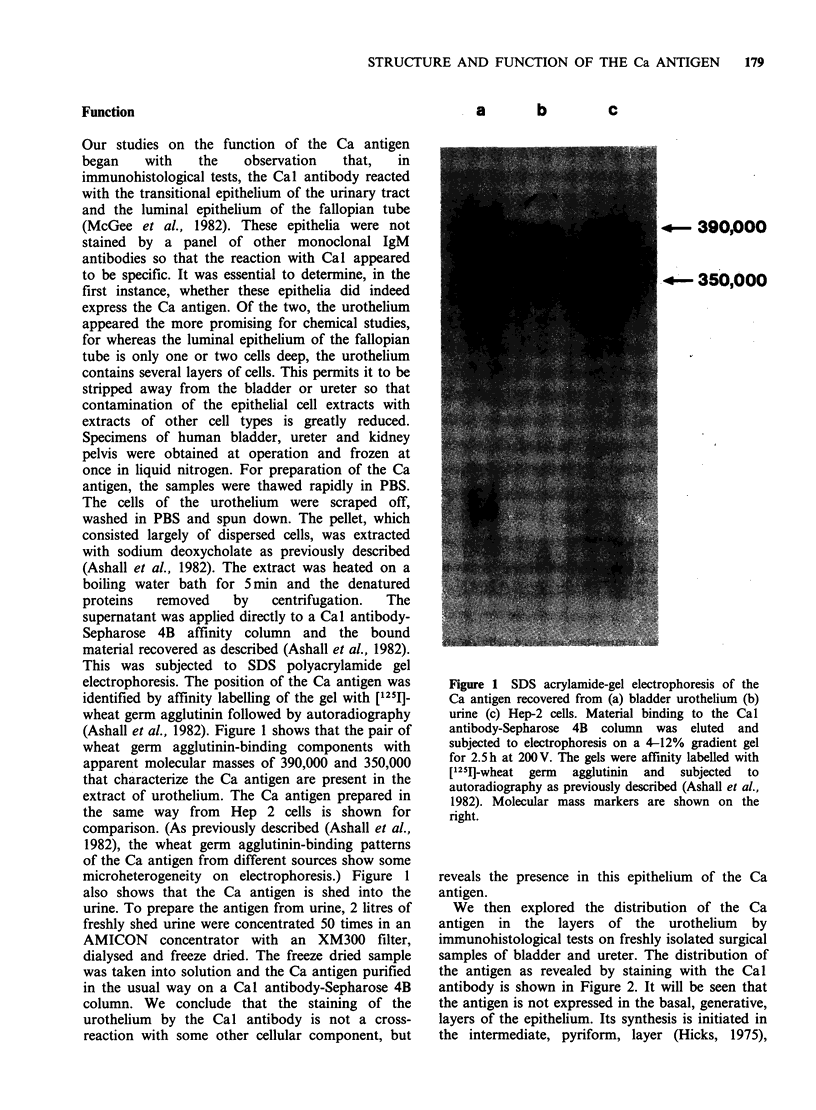
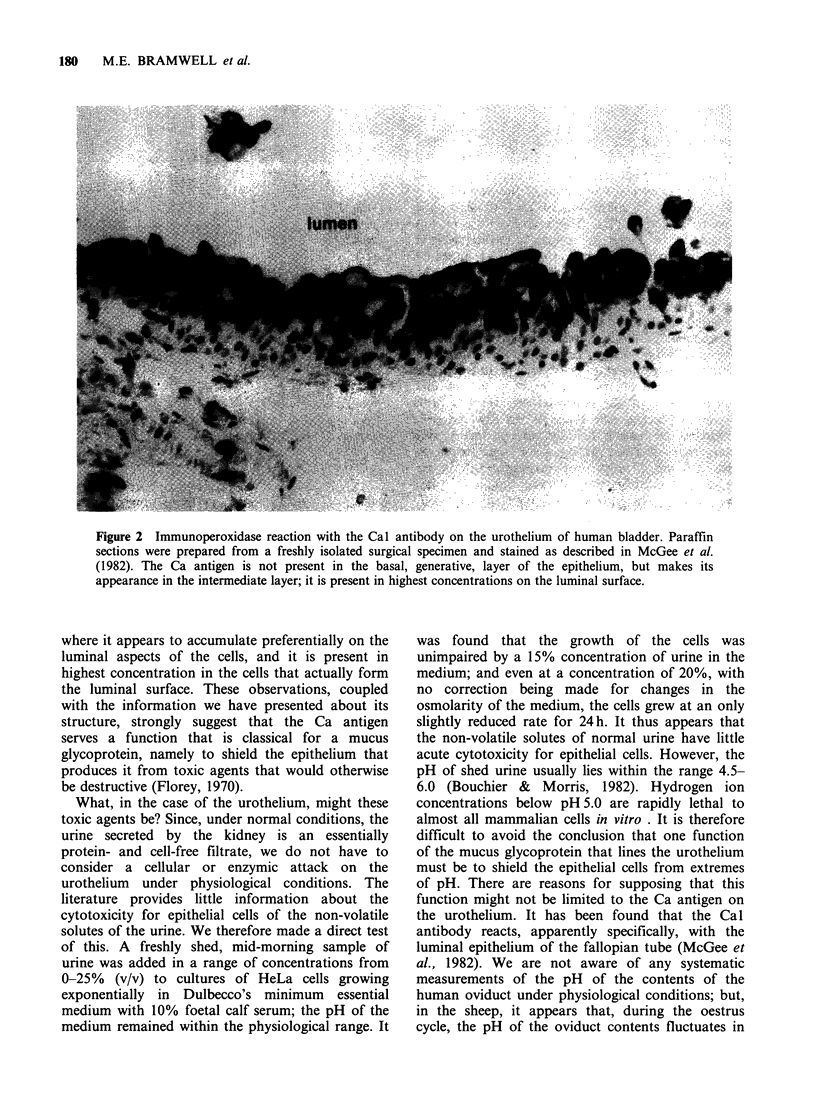
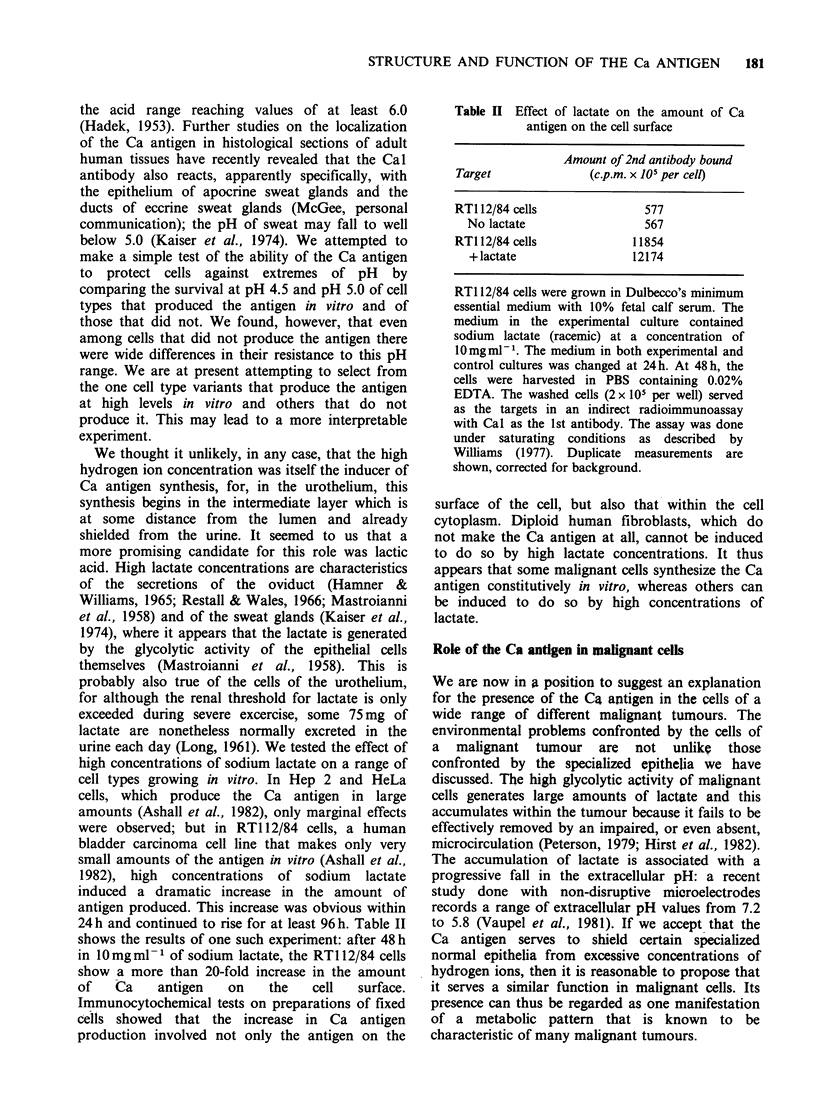
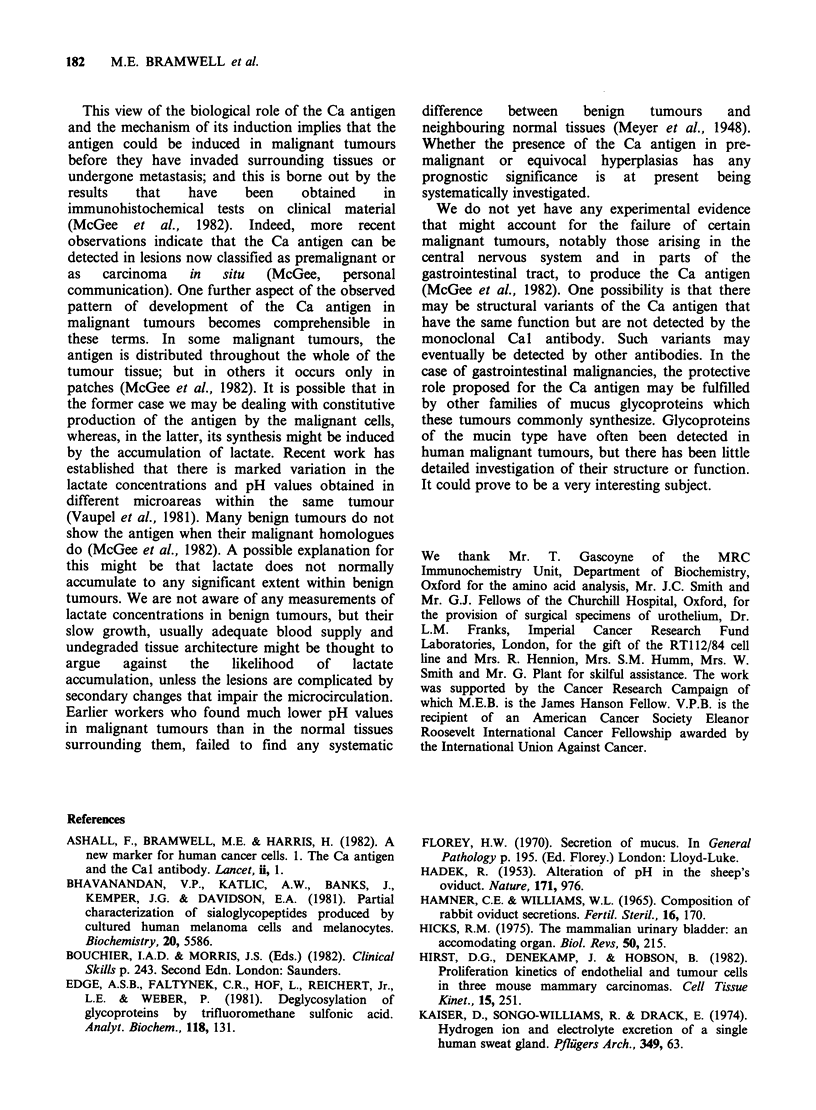
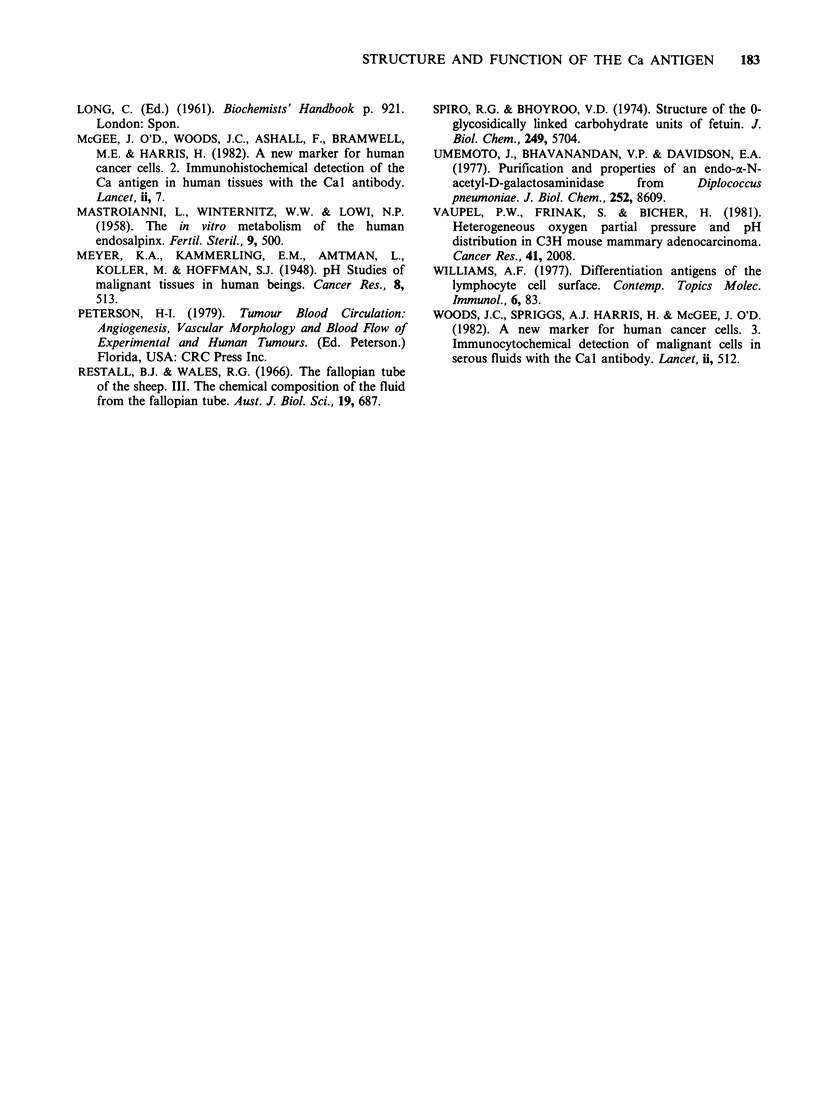
Images in this article
Selected References
These references are in PubMed. This may not be the complete list of references from this article.
- Bhavanandan V. P., Katlic A. W., Banks J., Kemper J. G., Davidson E. A. Partial characterization of sialoglycopeptides produced by cultured human melanoma cells and melanocytes. Biochemistry. 1981 Sep 15;20(19):5586–5594. doi: 10.1021/bi00522a036. [DOI] [PubMed] [Google Scholar]
- Edge A. S., Faltynek C. R., Hof L., Reichert L. E., Jr, Weber P. Deglycosylation of glycoproteins by trifluoromethanesulfonic acid. Anal Biochem. 1981 Nov 15;118(1):131–137. doi: 10.1016/0003-2697(81)90168-8. [DOI] [PubMed] [Google Scholar]
- HADEK R. Alteration of pH in the sheep's oviduct. Nature. 1953 May 30;171(4361):976–976. doi: 10.1038/171976a0. [DOI] [PubMed] [Google Scholar]
- HAMNER C. E., WILLIAMS W. L. COMPOSITION OF RABBIT OVIDUCT SECRETIONS. Fertil Steril. 1965 Mar-Apr;16:170–176. doi: 10.1016/s0015-0282(16)35523-6. [DOI] [PubMed] [Google Scholar]
- Hicks R. M. The mammalian urinary bladder: an accommodating organ. Biol Rev Camb Philos Soc. 1975 May;50(2):215–246. doi: 10.1111/j.1469-185x.1975.tb01057.x. [DOI] [PubMed] [Google Scholar]
- Hirst D. G., Denekamp J., Hobson B. Proliferation kinetics of endothelial and tumour cells in three mouse mammary carcinomas. Cell Tissue Kinet. 1982 May;15(3):251–261. doi: 10.1111/j.1365-2184.1982.tb01044.x. [DOI] [PubMed] [Google Scholar]
- Kaiser D., Songo-Williams R., Drack E. Hydrogen ion and electrolyte excretion of the single human sweat gland. Pflugers Arch. 1974 May 24;349(1):63–72. doi: 10.1007/BF00587917. [DOI] [PubMed] [Google Scholar]
- MASTROIANNI L., Jr, WINTERNITZ W. W., LOWI N. P. The in vitro metabolism of the human endosalpinx; some preliminary studies. Fertil Steril. 1958 Nov-Dec;9(6):500–509. [PubMed] [Google Scholar]
- McGee J. O., Woods J. C., Ashall F., Bramwell M. E., Harris H. A new marker for human cancer cells, 2 immunohistochemical detection of the Ca antigen in human tissues with the Ca1 antibody. Lancet. 1982 Jul 3;2(8288):7–10. doi: 10.1016/s0140-6736(82)91151-5. [DOI] [PubMed] [Google Scholar]
- Reingold A. L., Dan B. B., Shands K. N., Broome C. V. Toxic-shock syndrome not associated with menstruation. A review of 54 cases. Lancet. 1982 Jan 2;1(8262):1–4. doi: 10.1016/s0140-6736(82)92552-1. [DOI] [PubMed] [Google Scholar]
- Restall B. J., Wales R. G. The fallopian tube of the sheep. 3. The chemical composition of the fluid from the fallopian tube. Aust J Biol Sci. 1966 Aug;19(4):687–698. doi: 10.1071/bi9660687. [DOI] [PubMed] [Google Scholar]
- Spiro R. G., Bhoyroo V. D. Structure of the O-glycosidically linked carbohydrate units of fetuin. J Biol Chem. 1974 Sep 25;249(18):5704–5717. [PubMed] [Google Scholar]
- Umemoto J., Bhavanandan V. P., Davidson E. A. Purification and properties of an endo-alpha-N-acetyl-D-galactosaminidase from Diplococcus pneumoniae. J Biol Chem. 1977 Dec 10;252(23):8609–8614. [PubMed] [Google Scholar]
- Vaupel P. W., Frinak S., Bicher H. I. Heterogeneous oxygen partial pressure and pH distribution in C3H mouse mammary adenocarcinoma. Cancer Res. 1981 May;41(5):2008–2013. [PubMed] [Google Scholar]
- Williams A. F. Differentiation antigens of the lymphocyte cell surface. Contemp Top Mol Immunol. 1977;6:83–116. doi: 10.1007/978-1-4684-2841-4_3. [DOI] [PubMed] [Google Scholar]
- Woods J. C., Spriggs A. I., Harris H., McGee J. O. A new marker for human cancer cells. 3. Immunocytochemical detection of malignant cells in serous fluids with the Ca1 antibody. Lancet. 1982 Sep 4;2(8297):512–514. doi: 10.1016/s0140-6736(82)90598-0. [DOI] [PubMed] [Google Scholar]



